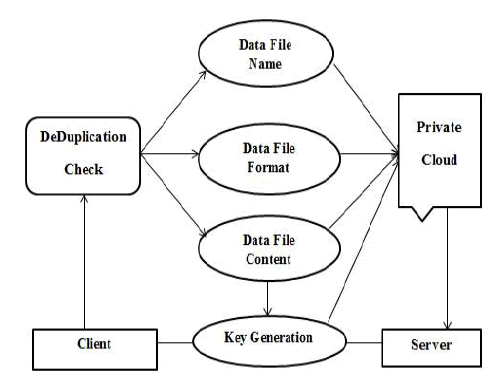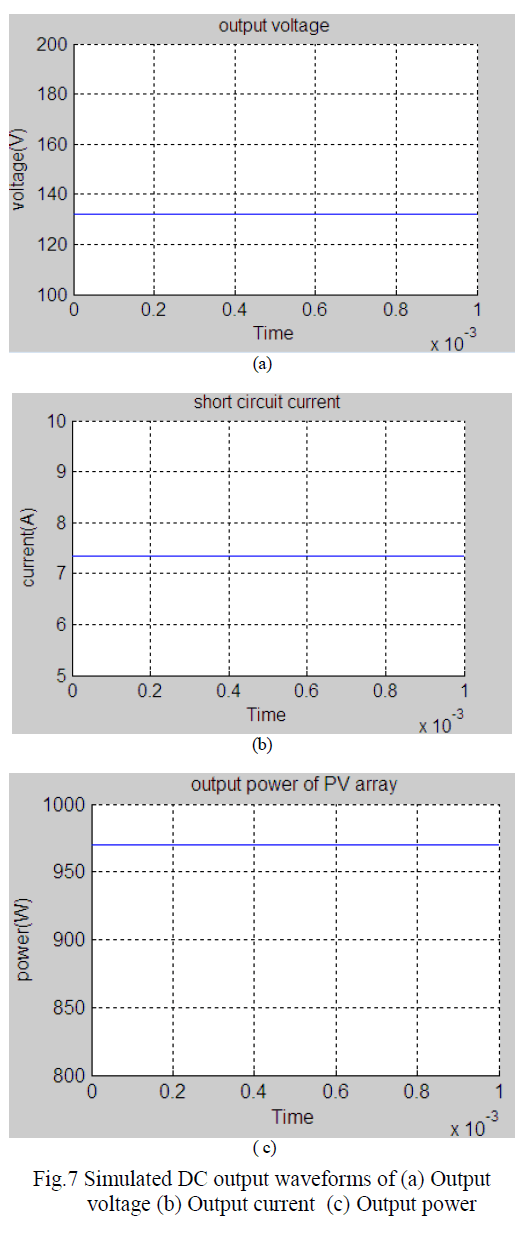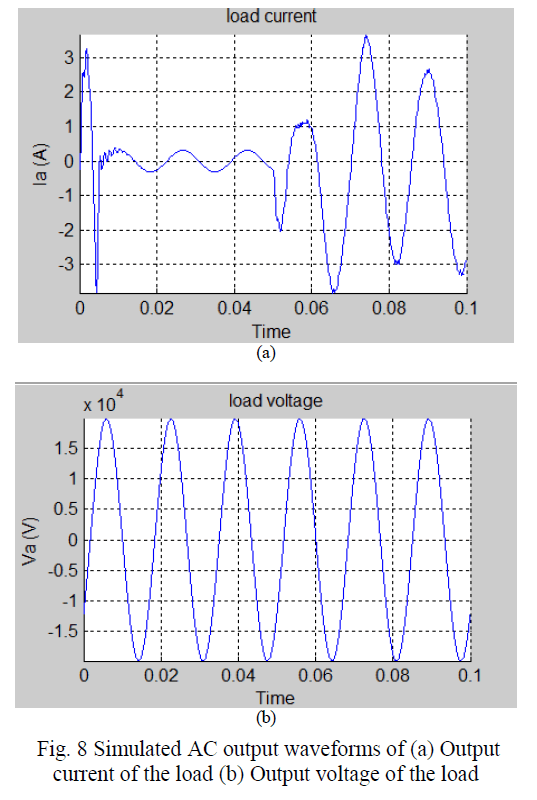ISSN ONLINE(2319-8753)PRINT(2347-6710)
ISSN ONLINE(2319-8753)PRINT(2347-6710)
| S.Rajalingam, V.Karelmarx Department of Electrical and Electronics Engineering, K.L.N College of Engineering, Madurai, India |
| Related article at Pubmed, Scholar Google |
Visit for more related articles at International Journal of Innovative Research in Science, Engineering and Technology
Nowadays power demand is high for utilizing more amount of power for various types of loads in the distribution system. This paper deals with implementation of solar power for standalone distributed generation system for commercial loads. The optimal placement of solar array is essential for standalone distributed generation (DG) system. The proposed system focuses on the design of the solar array with boost converter for achieving high power for standalone system. It uses suitable power electronic devices for improving the power quality, voltage regulation and reducing the ripple voltage and current. The electricity can be generated from solar energy and that can be supplied to the commercial loads. The power quality problems will be reduced with the help of Suitable control algorithm (Incremental conductance algorithm). The presented scheme portrays modeling of solar cell and experimental results have been demonstrated achieving high performance and reliability. The proposed system topology and its control strategy are designed and analyzed by using MATLAB/Simulink tool.
Keywords |
| Distributed Generation (DG), solar energy, Power quality, Incremental Conductance (IC) algorithm. |
INTRODUCTION |
| As conventional sources of energy are rapidly replenishing and increasing the cost of energy, solar energy becomes a promising alternative source. Among this non conventional energy sources , the energy due to the photovoltaic (PV) effect can be considered the most necessary and prerequisite sustainable resource because of its merits are that it is: 1) free of cost; 2) free from pollution; 3) recyclable; 4) easily available from sun; 5) distributed throughout the earth; 6) plentiful; 7) ubiquity. |
| The important short comings are that the capital installation cost is considerably high and the energy conversion efficiency is relatively low. To overcome these problems, the following two essential ways can be used: 1) enhance the conversion efficiency of the solar array and 2) enhance the output power from the solar array. With the improvement of photovoltaic technology in future, the PV array cost is expected to reduce in step by step [1]-[3]. The different MPPT techniques have been used and compared in the photovoltaic power systems [4]-[8]. |
| The grid interconnection of non conventional energy sources applications based on photovoltaic systems is today the most important application of PV systems. This trend is being enhanced because of the many merits of using non conventional energy sources in distributed generation (DG) power systems [9],[10]. An adaptive voltage control strategy was proven that the proposed voltage controller and the proposed load current observe are asymptotically stable, respectively. An excellent voltage regulation can be attained for rapid transient response, minimum steady-state error, and low THD under frequent load changes, unbalanced load, and nonlinear load [11]. However the wide a spread use of power electronics based devices and non linear loads introduce harmonic voltages and currents which may mitigate the power quality problems [12]. Use the intelligent controller for dc grid to improve the voltage regulation, response, efficiency, and stability of the power system [13]. A Cascaded multilevel inverter based PV system have been designed to achieve the minimum EMI, compensating the reactive power, mitigate the over voltages and power quality problems with minimum frequency control [14]. The modeling of a hybrid power system (PV and Wind), to attain optimized digital control system design, followed by Field Programmable Gate Array (FPGA). This may be simple connection to the grid. |
| This approach enables the design and implementation of efficient controllers for hybrid systems [15]. |
| The solar array is treated as a current source .An easiest way of tracking the maximum power point (MPP) and forcing the system to operate near this point. As to the system equivalent circuit model, the principle of energy conservation is used to develop the large- and small-signal model and transfer function. By using this model, the short comings of state-space-averaging method can be avoided. The digital signal processor (DSP) was used to implement the MPPT controller [16]-[19]. |
| To regulate the grid current and voltage for maximum power point tracking and enhancing behavior of dynamic response of grid-connected PV system using feedback zero dynamic design approach which linearises the system enables controller design for reduced-order PV system and attain zero dynamic stability [20]. To attain the equal current distribution by current sharing bus and ensure a rapid dynamic response, balancing the load sharing capability and eliminate the circulation current by using the current sharing control [23],[24]. Power electronic technology plays a vital role for achieving high performance, good efficiency, improve reliability, reducing the voltage and current ripples and mitigate the power quality problems [25],[26]. |
| In this paper a PV system can be easy to interfaced with power electronics for achieving the power quality improvement, reducing the output voltage and current ripples, voltage regulation. For achieve the maximum power using incremental conductance algorithm for rapidly changing atmosphere conditions using MATLAB/Simulink software. |
| This paper is followed as below. The design characteristic of solar array is described in section II. Power electronic components for solar cell based distributed generation in section III. MPPT process and control algorithms can be explained in the section IV. Simulation results can be shown in section V. Finally, Conclusion Proceeds in section VI. |
MODEL CHARACTERISTICS OF THE PV ARRAY |
| The building block of the PV array is the groups of solar cells are connected in series and parallel. Fig. 1.shows simulink block of the solar cell. The solar cell block represents a solar cell current source, which is basically a p-n semiconductor junction that directly converts solar irradiation into electricity with the help of photovoltaic effect. |
| A solar cell composed of a light generated current source. A single PV cell can generate a output voltage of 0.4 to 0.9V. Single solar cell generate only about 0.5 to 3W power depending on its size. Large size solar cell produces large output power. A group of solar cells (18 cells or 36cells) connected together, so that all operating conditions a PV module should give minimum of 6V or above 6V for 18 cells or 12V or above 12V for 36 cells. A Solar module connected in series or parallel to form a solar panel/solar array. A current generated from a PV module is proportional to its size. A series connection of PV module increases the voltage and current will be the constant. A parallel connection of module increases the current, but voltage is constant. Fig.2. shows an equivalent circuit of solar array for single diode model. |
 |
 |
POWER ELECTRONIC COMPONENTS FOR SOLAR POWER GENERATION SYSTEMS |
| The power electronic devices for solar cell based distributed generation consists of solar array, boost converter, dc/ac inverter, controller, filter design and step up transformer for stand-alone/grid connected applications as shown in Fig.4 |
| The benefits of the proposed power electronic devices can be summarized as follows [17]. |
| 1) Overall efficiency and can be improved. |
| 2) Reliability can be improved. |
| 3) Low EMI can be attained. |
| 4) Portable size can be attained. |
| 5) High power factor can be attained. |
| 6) Voltage and current ripples can be reduced. |
| 7) Power quality problems can be mitigated. |
| A. Boost Converter |
| A boost converter is used in the proposed photovoltaic generation system to step up the DC output voltage. The output of the boost converter is given to the input of the three-phase inverter. The boost converter is placed in between the PV array and the three phase inverter connected to the stand alone system. The different control objectives are possible to the PV system operation. The intermediate boost converter is built with a Metal Oxide Semiconductor Field Effect Transistor (MOSFET) as main power switch in a standard boost topology that presents an energy storage capacitor, a diode rectifier and voltage smoothing inductor. The converter is linked to the PV system with a capacitor filter for reducing the high frequency ripple voltage and current generated by the transistor switching. |
| B. Inverter |
| The output voltage of the boost converter is converted into ac using inverter. A voltage source inverter (VSI) corresponds to a dc-to-ac high power switching inverters using high power MOSFET. This semiconductor device is presented due to its minimum switching losses, high power producing and compact size when compared to other semiconductor devices. In addition, inverter power rating is low; the output voltage of the inverter is controlled by the gate pulses/pulse with modulation (PWM).The inverter structure is designed to make use of three pole structure. This three level inverter topology generates more sinusoidal output voltage waveform without enhancing the switching frequency. |
| C. LC Filter Design |
| In any distributed generation (DG) scheme requires to confirm to power quality standards for stand-alone/grid connected system. An LC filter is used at the output of the inverter to achieve better harmonic reduction in the phase current and the output voltage of the inverter. Inverterside placement of filter results in enhancing current rating of the filter inductor, whereas capacitors are rated at a decreasing voltage. Therefore, it is required to fix with an output filter to eliminate unwanted ripples and harmonics injected by inverter and nonlinear loads present in the distributed generation system. These harmonics are effectively filtered out at the inverter terminal to improve power quality. To achieve better harmonic reduction in phase current and voltage, the values of filter input inductor (Lf) and capacitor (Cf) can be calculated by optimizing the filter parameters based on the following equation: |
 |
 |
| D. Transformer Design |
| The Filtered output voltage is stepped up through a transformer for standalone/grid connected applications. The transformer isolates the low voltage side and high voltage side. The turns ratio of the transformer is choose based on the equation of the rms value of line to line voltage of three phase inverter. |
CONTROL ALGORITHMS FOR MPPT PROCESS |
| The algorithm of an MPPT or Maximum Power Point Tracking that included in the charge controllers used for extracting maximum available power from PV module under certain atmospheric conditions. Maximum power Varies with solar insolation, ambient temperature and solar cell temperature.Various MPPT control algorithms have been proposed [4]–[5]. Most of the cases these two algorithms often used to attain the maximum power point tracking are: 1) the perturbation and observation method and 2) the incremental conductance method. Although the perturb and observe(P&O) method was easy to implemented and low cost but not varying rapidly changing atmospheric conditions. The incremental conductance method offers good performance under rapidly varying atmospheric conditions like solar irradiation and solar cell temperature. Therefore, the incremental conductance method was used in this paper to control the output current and voltage of the solar arrays. |
 |
 |
 ' ' |
 |
CONCLUSIONS |
| This paper has presented a control of an existing power electronic interfacing devices to improve the quality of power for a standalone distributed generating system. It has been shown that the power electronic interfacing devices can be effectively utilized for power conditioning without affecting its normal operation of power transfer. The power electronic interfacing devices with the proposed approach can be utilized to: i) mitigate the power quality problems from power generated from solar energy to the stand alone system for commercial loads, and/or, ii) regulate the voltage, iii) mitigate the voltage and current ripple. This approach thus eliminates the need for additional power conditioning equipment to improve the quality of power at standalone distributed generation system. Extensive MATLAB/Simulink simulation based results have been proposed this approach. |
ACKNOW LEDGMENT |
| The authors are grateful to the Principal and Management of K.L.N College of Engineering, Madurai, for providing all facilities for the research work. |
References |
|